We have much more to do and your continued support is needed now more than ever.
Victory: A Wildlife-Friendly Farm Bill
Bipartisan legislation funds federal conservation programs

After years of hard work and many months of negotiations, the U.S. Senate and House of Representatives passed the 2018 Farm Bill which includes many wins for wildlife. This bipartisan and wildlife-friendly legislation is a huge step forward to help farmers and ranchers protect and restore crucial habitat on agricultural lands across the country. See highlights from the bill below, and learn about some of the species that will benefit:
No Cuts in Conservation Funding
At one point , Congress was set to make a massive, $800 million cut in funding for conservation programs. This would have been devastating to wildlife who rely on federal habitat restoration programs funded by previous Farm Bills.
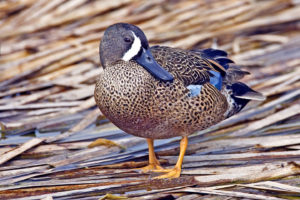
These programs are the largest source of funds for conservation on private lands. Since over sixty percent of all land in the contiguous United States is private, this funding is especially important for conservation.
Farm Bill conservation programs are completely voluntary and so popular that they are vastly over-subscribed with lengthy waitlists. In some states only 1 out of every 6 farmers that apply for these programs is approved. Now, with continued funding, the newest Farm Bill will continue to help farmers and ranchers secure habitat for species in serious decline, protect waterways from toxic runoff, and increase soil health on agricultural lands. Funding levels in this bill set the baseline for future farm bills which is critical to maintain continuity of these important programs.
Increased Funding for Wildlife-Friendly Practices
Wildlife species are continuing to decline and it is imperative that we invest in their recovery on private lands. In previous Farm Bills, The Environmental Quality Incentives Program (EQIP) – which has a set percentage of funding going specifically to wildlife programs – has allocated only small amounts of support for wildlife friendly practices. Much of the wildlife funding within EQIP goes in large part to the Working Lands for Wildlife program that has helped keep species like the Greater Sage Grouse and New England cottontail off the Endangered Species list.
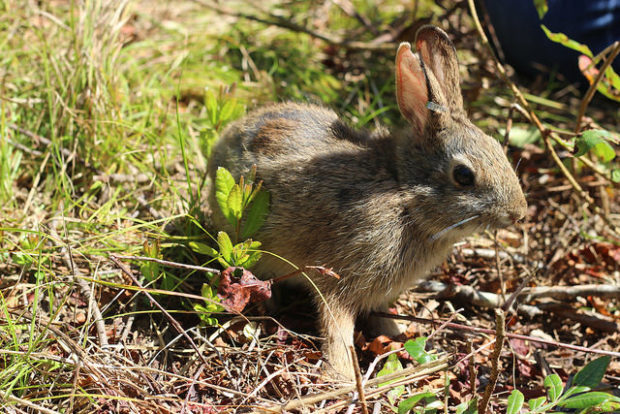
In the 2018 Farm Bill, lawmakers reset the benchmark to the highest level ever: at least 10 percent of EQIP funds must now be for wildlife-friendly practices. At the same time, the total funding for the program is increased.Currently, there is about $60 million a year that is spent on wildlife practices through EQIP. With the higher funding level and this critical policy change there will now be at least $175-200 million per year dedicated to wildlife practices. This means that more farmers, ranchers, and foresters than ever before will be able to create habitat for wildlife on their lands .
Strong Funding for Critical Wildlife Habitat through Conservation Easements Program
Conservation easements that take land out of production also provide critical habitat for wildlife and help to improve water quality, reduce flooding, recharge groundwater, and protect open space. The Agriculture Conservation Easement Program (ACEP) is funded at strong levels of $450 million per year and important provisions are added to ensure greater flexibility in participation. One point of concern, however, is that, the bill makes a change to no longer require conservation plans for agricultural conservation easements, potentially undermining the conservation value of this program.
Good News for Outdoor Enthusiasts, Combating Invasive Species & Wildlife Disease
This bill increases the Voluntary Public Access and Habitat Incentives Program that support hunting, fishing, and other wildlife friendly recreational activities to $50 million over five years from the previous $40 million. It provides funding to deal with several pressing threats to wildlife, including funding of $75 million for feral swine eradication and for making research around chronic wasting disease a high priority.
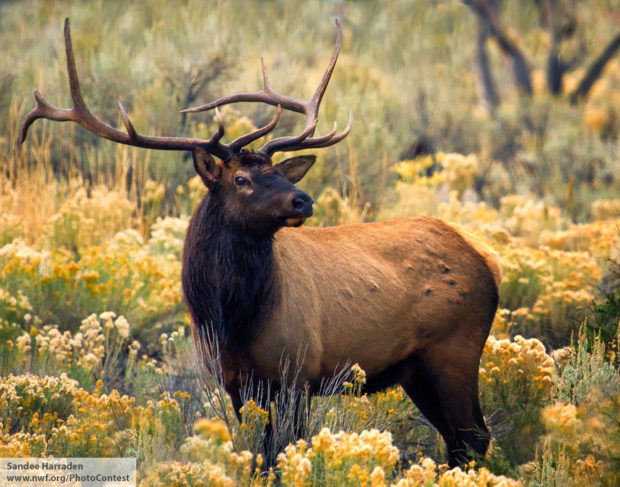
No Attacks on Bedrock Environmental Laws
Thankfully, the passed 2018 Farm Bill includes none of the attacks on the Clean Water Act, Endangered Species Act and other major environmental laws that were passed in the original House version of the bill. Additionally, lawmakers also dropped a concerning amendment that could have led to an unintended spread of disease to wildlife like Bighorn sheep on previously retired public land grazing allotments.
Win for Quail: An Expanded Conservation Reserve Program
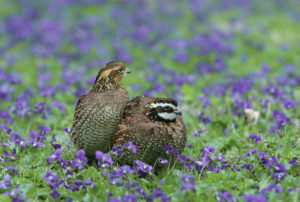
The 2018 Farm Bill expands the Conservation Reserve Program (CRP) by 3 million acres up from 24 million acres in the last bill. CRP is one of the most important land conservation programs leading to significant protections for soil, water, and wildlife. It expands the use of CRP for haying and grazing but prohibits those activities during primary nesting season since CRP lands provide critical habitat for ground nesting birds such as quail. The National Wildlife Federation looks forward to working with the administration to ensure that safeguards that continue the popularity and demand of the program as well as habitat value are maintained.
Protects Waterways for Wildlife
The 2018 Farm Bill includes a variety of innovative new provisions to help protect drinking water quality and source water. Overall, the new bill has language directing the U.S. Department of Agriculture to place greater emphasis on water quality and soil health.
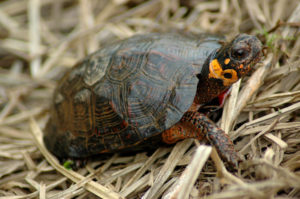
The Conservation Reserve Program now includes a new Clean Lakes, Estuaries, and Rivers (CLEAR) initiative that prioritizes practices for improving water quality.
The Farm Bill includes important efforts like the Water Source Protection Program and the Watershed Condition Framework which will help restore the condition of watersheds in National Forests. With nearly half of the watersheds on national forests classified by the Forest Service as “functioning at risk” or “impaired,” targeted watershed restoration with diverse partners will be essential to ensure clean, abundant water for people, fish, wildlife including river otters and bog turtles.
Keeps Wetlands Safeguards
The previous Farm Bill tied conservation compliance to crop insurance subsidies,requiring farmers receiving crop insurance premium subsidies to adhere to basic soil and wetland conservation provisions. It is only fair that farmers protect the public benefits of water quality improvement, groundwater recharge, floodwater storage and wildlife habitat provided by wetlands in exchange for taxpayer-funded subsidies. The 2018 Farm Bill rebuffed all efforts to weaken wetland protections – a major win for wildlife like the Blue-winged Teal.
Closing a Loophole: Win for Grassland Birds & Monarchs
While the “Sodsaver” provision to protect native grasslands through discouraging conversion to cropland was unfortunately not expanded beyond the current six-state region, the bill does close a damaging loophole in current law.
This loophole allowed farmers to convert native sod to perennial crops and then to annual crop without seeing a reduction in their crop insurance premium subsidies. With less than five percent of America’s once-vast native grasslands left on the landscape, grassland birds are the fastest declining group of bird species and monarch butterflies have declined to such an extent that it is being considered for listing under the Endangered Species Act. Closing this loophole helps protect their habitat from federally-funded destruction.
Incentivizes Cover Crops that Benefit Soil, Water, and Habitat
Cover crops are non-commodity crops planted during fallow periods to build soil health, prevent erosion or chemical leaching, and to provide nutrients for commodity crops on fields. By adding language that incentivizes cover crops, the bill removes the unintentional consequence of the USDA Risk Management Agency (RMA)’s crop insurance program that has made it difficult for farmers to begin using such conservation practices.

Cover crops are good for farmers: they often decrease the risk of crop failure, increase soil organic matter, and make the land more resistant to drought and flooding. The 2018 Farm Bill will also allow the crop insurance program to consult with Natural Resources Conservation Service to better consider soil type when rating risk of individual farms. This could lead the way to providing more opportunities for wildlife habitat by reducing the incentive to farm marginal lands that lead to inordinate water quality degradation.
Promoting the Power of Data to Protect Wildlife Habitat
This bill takes some important first steps for collecting and putting U.S. Department of Agriculture (USDA) data to use in improving conservation practices and helping farmers make important land management decisions. National Wildlife Federation is hoping that this will layout a roadmap for future Farm Bill actions that allow farmers to use their data effectively in making conservation decisions. Smarter, data-driven decisions will be a win for wildlife like lesser prairie-chickens who depend on conservation programs on working lands.
Maintains flexibility in Working Lands Programs
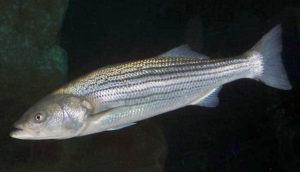
By streamlining and better funding the Regional Conservation Partnership Program (RCPP) that was created in the last Farm Bill, the new bill better enables partner and landowner participation. These are really important gains for the Chesapeake Bay and Great Lakes regions since public-private partnerships can now use funds for innovative approaches to see improvements in these priority watersheds.
Unlike the previously passed House bill, the final 2018 Farm Bill continues to include the critically important and popular Conservation Stewardship Program (CSP). CSP helps farmers maintain and improve existing conservation programs and rewards performance based conservation. Maintaining a full tool box of approaches for farmers is critical to seeing conservation wins for our lands, water, and wildlife.
The National Wildlife Federation heralds the many wins for wildlife as enumerated above in the final 2018 Farm Bill and commends the leadership in the House and Senate agriculture committees for their bipartisan effort and continuing support of conservation on private lands.
Keep up to date with our Agriculture Team’s efforts to protect wildlife on working lands by following them on Twitter.
It is official! The @HouseDemocrats & @HouseGOP passed the #FarmBill: 369-47! This #FarmBill18 is a win for farmers, ranchers, and wildlife! pic.twitter.com/vEOIPC3pGO
— NWF Agriculture Team (@nwf_ag) December 12, 2018





















